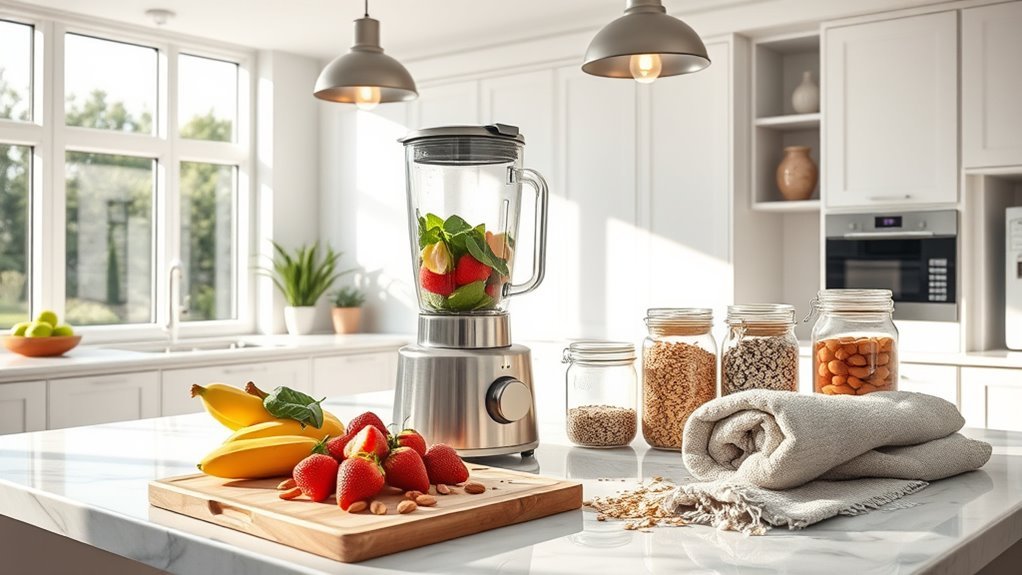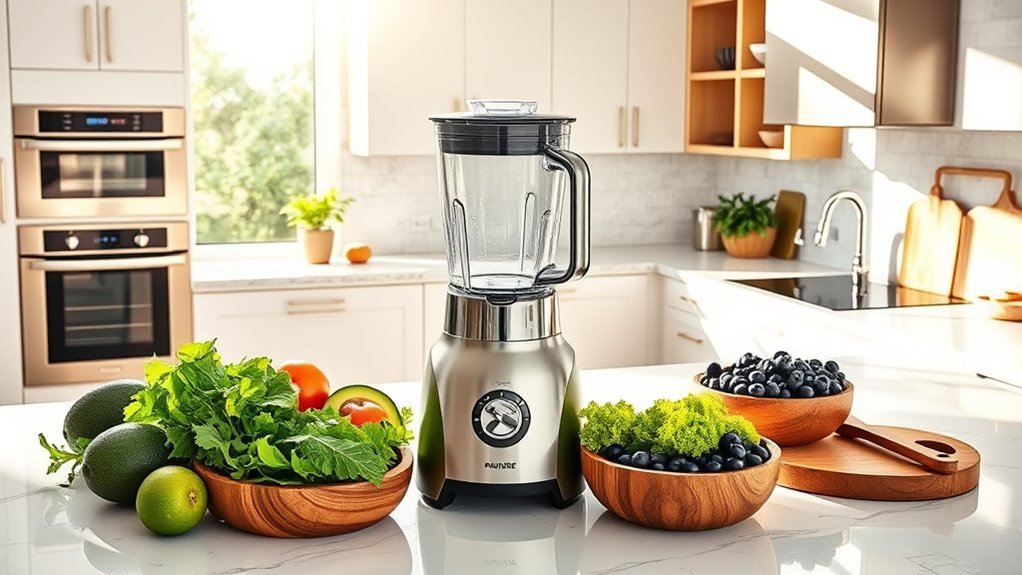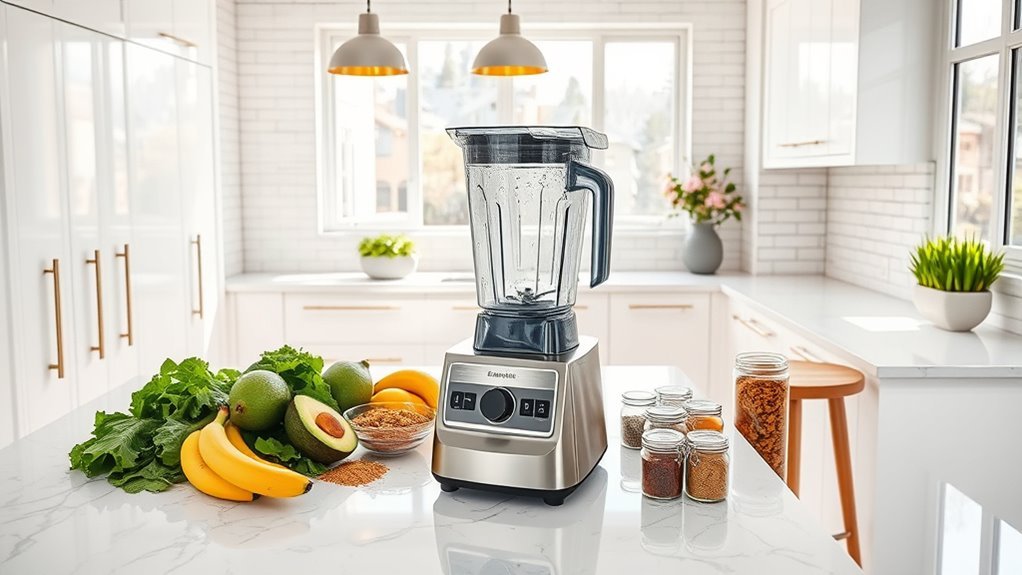We’ve mastered ultra-precise emulsion creation through ten critical techniques: high-pressure homogenization at 30,000 psi, ultrasonic cavitation for nanoscale control, microfluidic processing, strategic mixing at 1500-3000 RPM, targeted HLB selection, real-time viscosity monitoring, shear force optimization, temperature management, phase ratio control, and spectrophotometric analysis. Each method demands obsessive attention to detail, but the results speak for themselves – stable, uniform emulsions down to 0.1 µm. The surface of emulsion mastery beckons.
High-Pressure Homogenization Methods for Droplet Size Control

Three key principles drive high-pressure homogenization‘s dominance in modern emulsion creation. We’re talking about intense pressure (up to 30,000 psi), precise droplet size reduction, and enhanced emulsion stability – it’s a trifecta of control.
Let’s get ultra-precise: we can achieve uniform droplet sizes down to 0.1 µm by forcing emulsions through a narrow gap. The resulting shear and turbulence prevent coalescence and flocculation, creating particle size distributions that’ll make your competitors weep.
Want to optimize? We’ll adjust three critical parameters: pressure level, number of passes, and temperature. Get these right, and you’ll extend shelf life dramatically.
It’s why pharmaceuticals and food manufacturers won’t touch anything else – when you need reliable emulsion stability, high-pressure homogenization delivers every time.
Advanced Temperature Management During Emulsification
While high-pressure homogenization provides mechanical control, mastering temperature management is your secret weapon for emulsion perfection.
Advanced temperature management isn’t just about heating things up – it’s about precision control that transforms your continuous phase’s viscosity and enhances emulsifying agents‘ performance. We’re leveraging temperature’s impact on interfacial tension to create ultrasmooth dispersions.
- Precise temperature controls during homogenization = smaller, more uniform droplet size = superior emulsion stability (yes, it’s that simple)
- Ideal temperature ranges reduce continuous phase viscosity, letting you achieve previously impossible dispersion levels
- Smart thermal management protects sensitive ingredients from degradation, preserving your emulsion’s functional benefits
Trust us – master temperature control, and you’ll wonder how you ever created emulsions without it.
Strategic Selection of Emulsifiers and Stabilizers

Since your emulsion’s survival depends on the molecular guardian angels you choose, let’s get serious about emulsifier selection.
Start with the hydrophilic-lipophilic balance (HLB) – it’s your roadmap. For oil-in-water emulsions, target HLB 7-8. Water-in-oil? Aim for 14.
We’re not stopping at basic emulsifiers. Think strategically: macromolecular emulsifiers create thicker protective layers that fight droplet coalescence better than their single-molecule cousins.
Add stabilizers to boost viscosity and you’ll lock down those dispersed phases like a maximum-security prison.
Here’s your power move: Consider Pickering emulsifiers. These solid particles are game-changers for stability.
Match your emulsifier’s properties to your continuous phase – hydrophilic for water-heavy formulations, hydrophobic for oil-dominant ones.
Optimal Mixing Speed and Duration Protocols
Now that you’ve got your emulsifiers lined up, let’s master the mechanics of mixing. The ideal mixing speed for ultra-precise emulsions falls between 1500-3000 RPM, while emulsification time should hit that sweet 15-minute mark for thorough mixing and consistent droplet size distribution.
- Set your speed right – too slow means unstable emulsions, too fast wastes energy.
- Watch that clock – 15 minutes isn’t just a suggestion, it’s your ticket to droplet uniformity.
- Monitor viscosity like a hawk – it’s the hidden variable that can make or break your batch.
We’re not done until we’ve nailed the high-pressure homogenization step. This refining process pushes droplet size below 1 micron, delivering the stability your emulsion demands.
Keep these mixing parameters tight, and effective emulsification follows.
Viscosity Enhancement Techniques for Stability

Because stability makes or breaks your emulsion’s success, mastering viscosity enhancement is non-negotiable.
We’ll show you how to create a thicker continuous phase that keeps those dispersed droplets perfectly suspended.
Let’s start with emulsifiers – they’re your front-line warriors against interfacial tension. Choose ones with the right HLB values, then add thickeners like xanthan or guar gum.
They’ll transform your continuous phase into a protective matrix that prevents droplet recombination and maintains homogeneity.
Here’s the beauty of increased viscosity: it reduces shear forces on droplets, making them smaller and more stable.
Think of it as creating microscopic shock absorbers throughout your emulsion. The result? A perfectly stable system that maintains its properties exactly as long as you need it to.
Ultrasonic Cavitation in Precision Blending
Three revolutionary forces converge in ultrasonic cavitation: sound waves, microbubbles, and violent collapse.
We’re harnessing this power for superior emulsion creation, achieving precise control over droplet size down to 20 nanometers.
Ultrasonic emulsification transforms how we blend lipophilic compounds into aqueous environments, delivering unmatched homogeneity and solubility improvement.
- Watch your emulsions stabilize in minutes, not hours – we’re talking revolutionary efficiency here
- Slash your energy costs while achieving nanoscale precision that’ll make your lab manager weep with joy
- Create emulsions so stable, they’ll outlast your career (and probably your retirement)
The adjustable energy input lets us fine-tune every blend, optimizing stability without compromising sensitive ingredients.
We’re not just mixing – we’re orchestrating molecular harmony at the nanoscale.
Microfluidic Processing for Uniform Particle Distribution
While ultrasonic cavitation revolutionizes emulsion stability, microfluidic processing takes precision to an entirely new dimension. We’re talking about droplet size distributions in the 10-500 nm range – that’s mind-bendingly precise. Let’s explore what makes this technique tick.
| Feature | Benefit | Impact |
|---|---|---|
| Laminar Flow | Perfect Mixing | Consistent Results |
| Adjustable Parameters | Custom Sizing | Tailored Solutions |
| High-Throughput | Mass Production | Scale-up Ready |
We’ve mastered control over immiscible phases through microchannels, where optimization parameters like pressure and temperature become our playground. The result? Uniform particle sizes that’ll make your conventional methods blush. It’s not just about consistency – it’s about reproducibility at scale. For pharmaceuticals and food science applications, this level of emulsion stability isn’t just nice to have – it’s mission-critical.
Phase Ratio Optimization for Maximum Stability
As we immerse ourselves in phase ratio optimization, let’s tackle the most critical factor in emulsion stability: the perfect balance between your water and oil phases.
We’ll refine your formulations through precise control of dispersed droplets and interfacial tension.
- Master the 3:1 water-to-oil ratio – it’s your golden ticket to maximum stability in oil-in-water emulsions. Trust us, we’ve tested countless combinations.
- Keep emulsifier concentration between 2-5% – going higher won’t help, and your wallet will thank you.
- Monitor physicochemical properties religiously – they’ll make or break your emulsification efficiency.
Remember: phase ratios near 1:1 spell trouble through increased coalescence.
Fine-tune your ideal formulations based on specific ingredients, and you’ll achieve that perfect, stable emulsion every time.
Real-Time Monitoring of Emulsion Parameters
Now that you’ve mastered phase ratios, let’s take control of your emulsion’s essential signs.
We’ll harness Dynamic light scattering and Turbiscan technology to track droplet size and phase separation in real-time. Don’t fly blind – these tools give us instant feedback on emulsion stability.
We’re not stopping there.
We’ll deploy in-line rheometers to monitor viscosity while using zeta potential analysis to fine-tune emulsifier selection. For visual confirmation, we’ll track optical properties and turbidity through spectrophotometry.
Want to see inside your emulsion? Confocal laser scanning microscopy reveals droplet morphology as it happens. It’s like having X-ray vision for your formulation – showing exactly what’s working and what isn’t.
Master these monitoring techniques, and you’ll never lose control of your emulsion again.
Shear Force Application and Control Strategies
Since shear force makes or breaks your emulsion’s success, let’s plunge into mastering its application. High shear mixers and homogenizers are our weapons of choice, delivering the precise droplet size control we need.
When we combine shear with cavitation forces, we’re maximizing mixing efficiency while cutting energy consumption.
- Monitor shear rate obsessively – it’s your emulsion stability lifeline
- Master the control strategies for speed and duration – they’re non-negotiable for consistent results
- Track viscosity changes like a hawk – they’ll tell you exactly when to adjust your parameters
We’ll achieve ideal emulsification process control through strategic force application.
Remember: smaller droplets mean better stability, and that’s exactly what proper shear force application delivers.
Don’t skimp on monitoring – your emulsion’s uniformity depends on it.
Frequently Asked Questions
Which Techniques Is Used for Compounding of Emulsion?
We utilize homogenization techniques and emulsifier selection while controlling temperature, mixing speed, and droplet size. Phase inversion, surfactant properties, stability factors, and process validation guarantee ideal formulation results.
What Are the Methods for Preparing Emulsions?
We prepare emulsions through high-pressure homogenization, ultrasonic processing, and microfluidization, considering emulsion stability, surfactant selection, mixing speeds, temperature effects, and phase inversion to control droplet size effectively.
How to Make a Good Emulsion?
Like conducting a delicate symphony, we’ll create perfect emulsions by carefully balancing ingredient ratios, selecting proper emulsifying agents, controlling temperature, and maintaining precise mixing speeds to achieve ideal particle size and stability.
What Are the Methods of Emulsification?
We can create emulsions using high shear mixing, ultrasonic emulsification, microfluidic devices, membrane emulsification, or phase inversion. Each method affects particle size and requires proper surfactant selection for colloidal stability.

